History of Ceiling Medallions
Ceiling medallions are decorative elements that have been used for centuries to enhance the beauty of ceilings. These ornamental fixtures have evolved over time and are now available in various materials, shapes, and sizes. This article will delve into the history and evolution of ceiling medallions, exploring their origins, significant milestones, and contemporary trends. We will examine the cultural influences, architectural developments, and artistic innovations that shaped the evolution of ceiling medallions, highlighting their enduring appeal and timeless elegance.
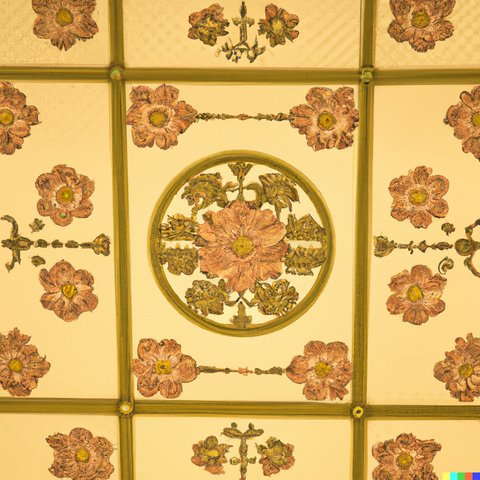
Ancient Origins:
The use of decorative elements on ceilings can be traced back to ancient civilizations such as the Egyptians, Greeks, and Romans. In Egypt, ceiling medallions were often carved from stone and adorned with intricate motifs and symbols. These medallions served not only a decorative purpose but also had symbolic and religious significance.
In ancient Greece, ceiling medallions were primarily made from terracotta or plaster. These medallions were often circular and featured elaborate patterns, including floral motifs, mythical creatures, and gods. These architectural elements were used to create an illusion of grandeur and elevate the overall aesthetic appeal of buildings.
During the Roman era, ceiling medallions evolved further, incorporating elements of both Egyptian and Greek designs. Roman medallions were often made from marble or plaster and depicted scenes from mythology or historical events. These ornamental fixtures were commonly installed in palaces, temples, and public buildings, highlighting the grandeur and power of the Roman Empire.
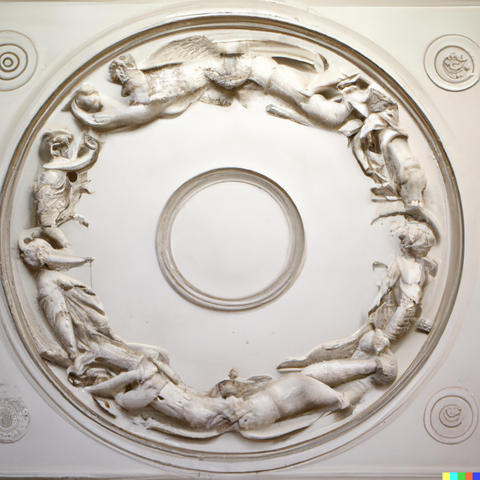
Medieval and Renaissance Influence:
During the Middle Ages, the use of ceiling medallions declined as architecture focused more on robust structures rather than ornate decorations. However, with the revival of classical art and the advent of the Renaissance, the popularity of ceiling medallions resurged. The Renaissance period saw a renewed interest in ancient Greek and Roman art, which greatly influenced the design of ceiling medallions.
In Italy, particularly in Florence, ceiling medallions were widely used as decorative elements in the lavish palaces and public buildings. These medallions were often crafted from marble or stucco and were adorned with intricate reliefs depicting scenes from classical mythology, biblical narratives, and the lives of prominent individuals. The influence of the Italian Renaissance spread throughout Europe, leading to the adoption of ceiling medallions in other regions.
In France, for example, the reign of Louis XIV saw the rise of grandiose ceiling designs known as "rosettes." These medallions were typically made from plaster and featured delicate flower motifs, reflecting the opulence and extravagance of the French court.
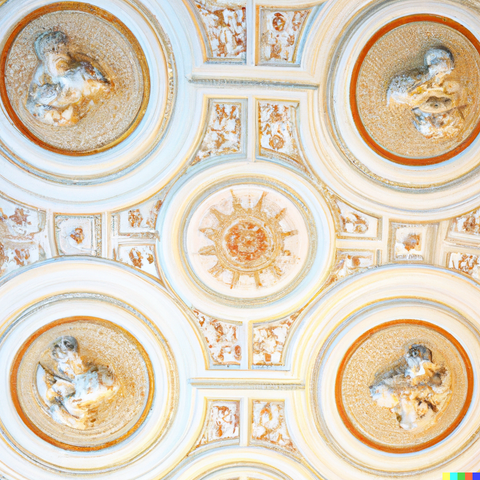
Victorian Era and the Industrial Revolution:
The Victorian era marked a significant milestone in the history of ceiling medallions. With advancements in technology and the rise of the middle class, ceiling medallions became more accessible and affordable. During this time, medallions were primarily crafted from cast iron, a material that could be mass-produced, allowing for intricate and detailed designs.
Victorian medallions featured a wide variety of motifs, including floral patterns, geometrical shapes, and intricate filigree work. These medallions were often painted or gilded to enhance their visual appeal. The popularity of ceiling medallions during this era can be attributed to the Victorian fascination with embellishment and ornamentation.
The Industrial Revolution further influenced the production and design of ceiling medallions. With the introduction of new materials, such as plaster, gypsum, and newer production techniques, the range of options for ceiling medallions expanded. The ability to replicate intricate designs quickly and at a lower cost propelled the popularity of medallions as a decorative element in both commercial and residential buildings.
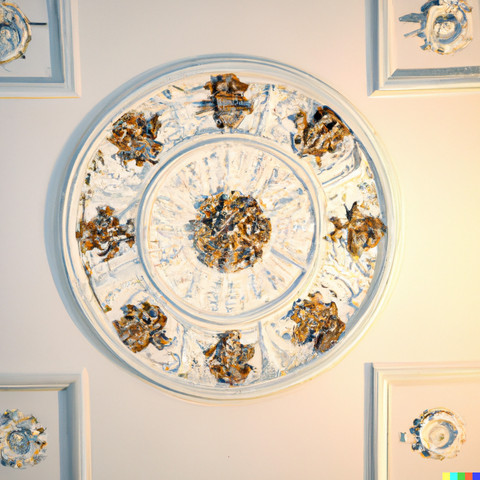
Modern Trends and Contemporary Innovations:
In the early 20th century, ceiling medallions continued to evolve in terms of design and materials. The Art Nouveau movement embraced organic forms and curved lines, which were incorporated into ceiling medallion designs. These medallions featured flowing floral motifs and ornate curvatures, reflecting the artistic trends of the time.
The Art Deco period brought a shift towards more geometric shapes and streamlined designs. Medallions during this era became more understated and sleeker. The materials used also expanded to include metals, such as brass and aluminum, which provided a modern and glamorous touch.
In recent years, ceiling medallions have witnessed a resurgence in popularity as homeowners and designers seek to add a touch of elegance and sophistication to their interiors. The availability of a wide range of materials, including polyurethane, resin, and lightweight composite materials, has made ceiling medallions more accessible and installation-friendly.
Contemporary ceiling medallions come in an array of designs, from traditional to modern. These medallions can be found in various shapes, including circular, rectangular, and square, accommodating different architectural styles and preferences. The choice of finishes, such as metallic, faux wood, or matte, allows for customization and coordination with other design elements in the room.
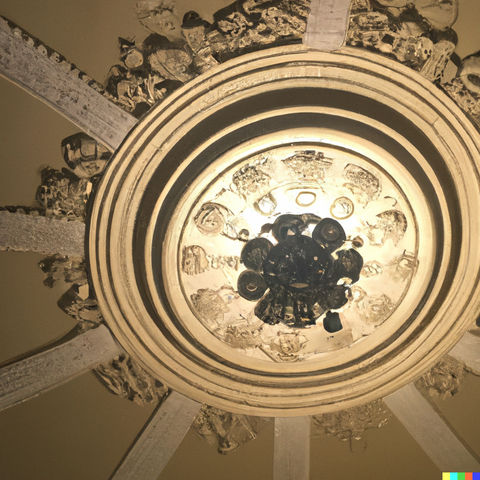
Ceiling medallions have come a long way since their ancient origins. From the intricate stone carvings of ancient Egypt to the mass-produced cast iron medallions of the Victorian era and the modern innovations of today, these ornamental fixtures have evolved in design, materials, and production techniques. Throughout history, ceiling medallions have served as a representation of cultural, architectural, and artistic movements. They have adorned palaces, cathedrals, and ordinary homes, adding a touch of elegance and grandeur to ceilings.
The enduring appeal of ceiling medallions lies in their ability to elevate the aesthetic value of a space, whether it be a traditional or contemporary interior. As we continue to innovate in design and materials, ceiling medallions are likely to undergo further evolution, embracing new trends and technologies. However, their timeless charm and ability to transform the plainest of ceilings into works of art will undoubtedly ensure their continued presence in interior decoration for years to come.






